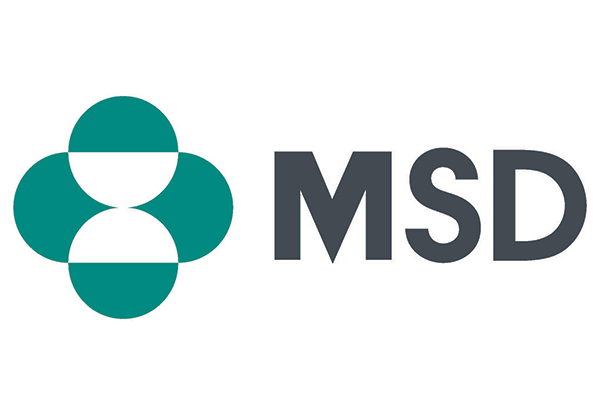CANCRO DELLA CERVICE – Studio di fase 3 KEYNOTE-A18: Pembrolizumab più chemioradioterapia riduce il rischio di progressione della malattia o di morte nel cancro della cervice avanzato

Sono stati presentati i risultati di Pembrolizumab ( Keytruda ) in combinazione con chemioradioterapia ( CRT ) nei pazienti di nuova diagnosi con cancro alla cervice localmente avanzato ad alto rischio. La combinazione è il primo regime basato sull’immunoterapia a dimostrare un miglioramento statisticamente significativo della sopravvivenza globale ( OS ) in questa popolazione di pazienti.
Secondo l’Organizzazione Mondiale della Sanità, il cancro del collo dell’utero è il quarto tumore più comune tra le donne a livello globale, responsabile di circa 660.000 nuovi casi e 350.000 decessi nel 2022.
Lo studio KEYNOTE-A18 ha valutato Keytruda in combinazione con Cisplatino e radioterapia a fasci esterni seguita da brachiterapia, rispetto al placebo, più chemioradioterapia concomitante in 1.060 pazienti con cancro della cervice localmente avanzato ad alto rischio di nuova diagnosi, che non erano stati sottoposti a intervento chirurgico definitivo, radioterapia o terapia sistemica. per il cancro della cervice.
I risultati hanno mostrato che Keytruda con la chemioradioterapia concomitante ha prodotto un miglioramento statisticamente e clinicamente significativo della sopravvivenza globale rispetto alla sola chemioradioterapia concomitante, e ha raggiunto il suo endpoint primario di sopravvivenza libera da progressione (PFS ).
Inoltre, il profilo di sicurezza di Keytruda è rimasto coerente con quello osservato negli studi precedenti, senza che siano stati identificati nuovi segnali di sicurezza.
Keytruda agisce migliorando la capacità del sistema immunitario di rilevare e combattere le cellule tumorali.
Keytruda è attualmente indicato come la terza terapia approvata per il trattamento del cancro cervicale negli Stati Uniti.
I risultati dello studio fanno seguito all’approvazione di Keytruda da parte della FDA ( Food and Drug Administration ) statunitense per pazienti con cancro della cervice con malattia allo stadio da 3 a 4a.
L’approvazione si è basata sui risultati dello studio KEYNOTE-A18, che hanno dimostrato che Keytruda più chemioradioterapia ha ridotto il rischio di progressione della malattia o di morte del 41% rispetto al placebo più chemioradioterapia.
Fonte: MSD / Merck
ENGLISH
Pembrolizumab plus chemoradiotherapy is the first immunotherapy-based regimen to demonstrate a statistically significant improvement in overall survival versus chemoradiotherapy alone in patients with newly diagnosed high-risk locally advanced cervical cancer
The phase 3 KEYNOTE-A18 trial, also known as ENGOT-cx11/GOG-3047, investigating Pembrolizumab ( Keytruda ), an anti-PD-1 therapy, in combination with chemoradiotherapy ( CRT ) met its primary endpoint of overall survival ( OS ) for the treatment of newly diagnosed patients with high-risk locally advanced cervical cancer.
At a pre-specified interim analysis conducted by an independent Data Monitoring Committee, Pembrolizumab in combination with concurrent chemoradiotherapy has shown a statistically significant and clinically meaningful improvement in overall survival versus concurrent chemoradiotherapy alone.
The safety profile of Pembrolizumab in this trial was consistent with that observed in previously reported studies; no new safety signals were identified.
As previously reported, KEYNOTE-A18 met its other primary endpoint of progression-free survival ( PFS ) in 2023.
This is the first phase 3 trial in which an immunotherapy-based regimen has shown a statistically significant and clinically meaningful improvement in overall survival compared to chemoradiotherapy alone.
In the U.S., KEYTRUDA has two additional approved indications in cervical cancer: in combination with chemotherapy, with or without Bevacizumab, for the treatment of patients with persistent, recurrent, or metastatic cervical cancer whose tumors express PD-L1 [ Combined Positive Score ( CPS ) greater than or equal to 1 ] as determined by an FDA-approved test; and as a single agent, for the treatment of patients with recurrent or metastatic cervical cancer with disease progression on or after chemotherapy whose tumors express PD-L1 ( CPS greater than or equal to 1) as determined by an FDA-approved test.
KEYNOTE-A18, also known as ENGOT-cx11/GOG-3047, is a randomized, double-blind phase 3 trial conducted in collaboration with the European Network for Gynecological Oncology Trial ( ENGOT ) groups and the GOG Foundation ( GOG ) investigating Pembrolizumab in combination with CRT ( Cisplatin and external beam radiotherapy [ EBRT ] followed by brachytherapy [ BT ] ) compared to placebo plus concurrent CRT for the treatment of newly diagnosed high-risk ( stage IB2-IIB with lymph node-positive disease, and stage III-IVA with and without lymph node-positive disease ) locally advanced cervical cancer where patients are treated with definitive intent. The primary endpoints are progression-free survival and overall survival, and secondary endpoints include complete response rate, objective response rate and safety. The trial enrolled 1,060 patients with cervical cancer who had not previously received any definitive surgery, radiation, or systemic therapy for cervical cancer. Patients were randomized ( 1:1 ) to receive either:
Pembrolizumab ( 200 mg intravenously [ IV ] ) every three weeks ( Q3W ) for five cycles concurrent with Cisplatin ( 40 mg/m2 IV ) weekly for five cycles ( an optional sixth infusion could be administered per local practice ) and radiotherapy ( EBRT followed by BT ), followed by Pembrolizumab ( 400 mg IV ) every six weeks ( Q6W ) for 15 cycles; Placebo IV Q3W for five cycles concurrent with Cisplatin ( 40 mg/m2 IV ) weekly for five cycles ( an optional sixth infusion could be administered per local practice ) and radiotherapy ( EBRT followed by BT ), followed by placebo IV Q6W for 15 cycles.
Cervical cancer forms in the cells lining the cervix, which is the lower part of the uterus. All women are at risk for cervical cancer, and it is most frequently diagnosed between the ages of 35 and 44. While screenings and prevention have resulted in declining cervical cancer rates, the disease continues to affect many people in the U.S. and around the world. Cervical cancer is the fourth most common cancer in women globally. In the U.S., it is estimated there will be approximately 13,820 new patients diagnosed with invasive cervical cancer and about 4,360 deaths from the disease in 2024.
Source: Merck ( MSD )
Xagena Oncologia
MelanomaOnline.net | OncoGinecologia.net | OncoImmunoterapia.net | OncologiaMedica.net | OncologiaOnline.net | TumoriOnline.net | TumoriRari.net

